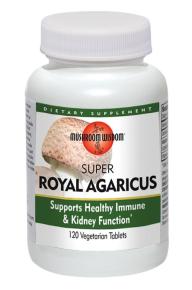Say the word “milk,” and the image of a cow generally comes to mind for most of us. The term “dairy cow” refers to female cattle two years old or older that have calved and thus begun the lactation cycle. But “dairy cattle” refers to dairy animals of all ages and both sexes. A “heifer” is a young female that hasn’t yet calved; a “bull calf” is a young male that will become a bull.
Most early breeds of livestock in the United States came from Europe in the 18th century. The popular black and white cows are Holsteins, proficient at producing copious amounts of milk. Jerseys and Brown Swiss are known for their milk’s high butterfat content. Other popular breeds include Ayrshires and Holstein-Friesians. The Milking Shorthorn, Red Polls, and Polled Durhams breeds are considered dual purpose cattle—for milk and beef production.
Able to consume large amounts of roughage, the dairy cow eats mostly hay, pasture (grass), and grains. For each 100 pounds of digestible nutrients in her feed, a cow will return roughly 18 pounds of edible milk solids.
Organic Dairy
Milk from dairy cows on organic farms, particularly pasture-based operations, contains significantly higher levels of conjugated linoleic acid (CLA) than conventional milk. According to the American Journal of Clinical Nutrition, potential benefits of CLA in the diet include reducing the propensity to store fat (especially abdominal fat), inhibiting tumor development, promoting sensitivity to insulin in cells, increasing immune response against viral antigens, and modulating inflammatory processes. Ongoing studies are exploring the potential of CLA to delay or slow the onset of Type 2 diabetes, a disease reaching epidemic proportions in developed countries.
Organic dairy products are among the fastest growing categories of organic foods. You can find whole milk, reduced-fat, low-fat, or skim, lactose-free, chocolate milk, and even eggnog available organically at your local co-op or natural food store. Organic butter, yogurt, cottage cheese, sour cream, ice cream, and a wide variety of organic cheeses are also available today.
Organic dairy farms are a diverse group, ranging in size from very small family-run operations with fewer than 75 cows to large, fully integrated farms with more than 2,000 cows. Organic dairies have choices about how to market their milk—through traditional milk cooperatives, dedicated organic cooperatives, or independently direct to their processor. But large farm or small, the same organic standards must be maintained in order for the milk to be certified organic.
Because consumer interest in organic milk has surpassed supply in the U.S., there is a need for additional organic dairy operations. Some buyers of organic milk are offering incentives to encourage conventional dairy farmers to transition to organic dairying.
To become an organic dairy, pasture and cropland must be managed organically for a minimum of 36 months before the farm can qualify for certification. No prohibited herbicides, insecticides, fungicides, synthetic fertilizers, treated seeds, or other prohibited substances can be used during that period.
Adequate records must be kept to verify land-management practices. To be certified organic, additional crop management requirements, including annual crop rotation, organic seed use, proper manure management, and detailed record keeping, come into play.
Certified Animal Husbandry
Dairy farming is a year-round job that requires dedication and daily commitment. Organic dairy production requires animal husbandry and management practices that differ from those used on nonorganic farms. The cost, challenge, and time required for a conventional dairy farm to become a certified organic dairy farm will vary depending upon its current management.


